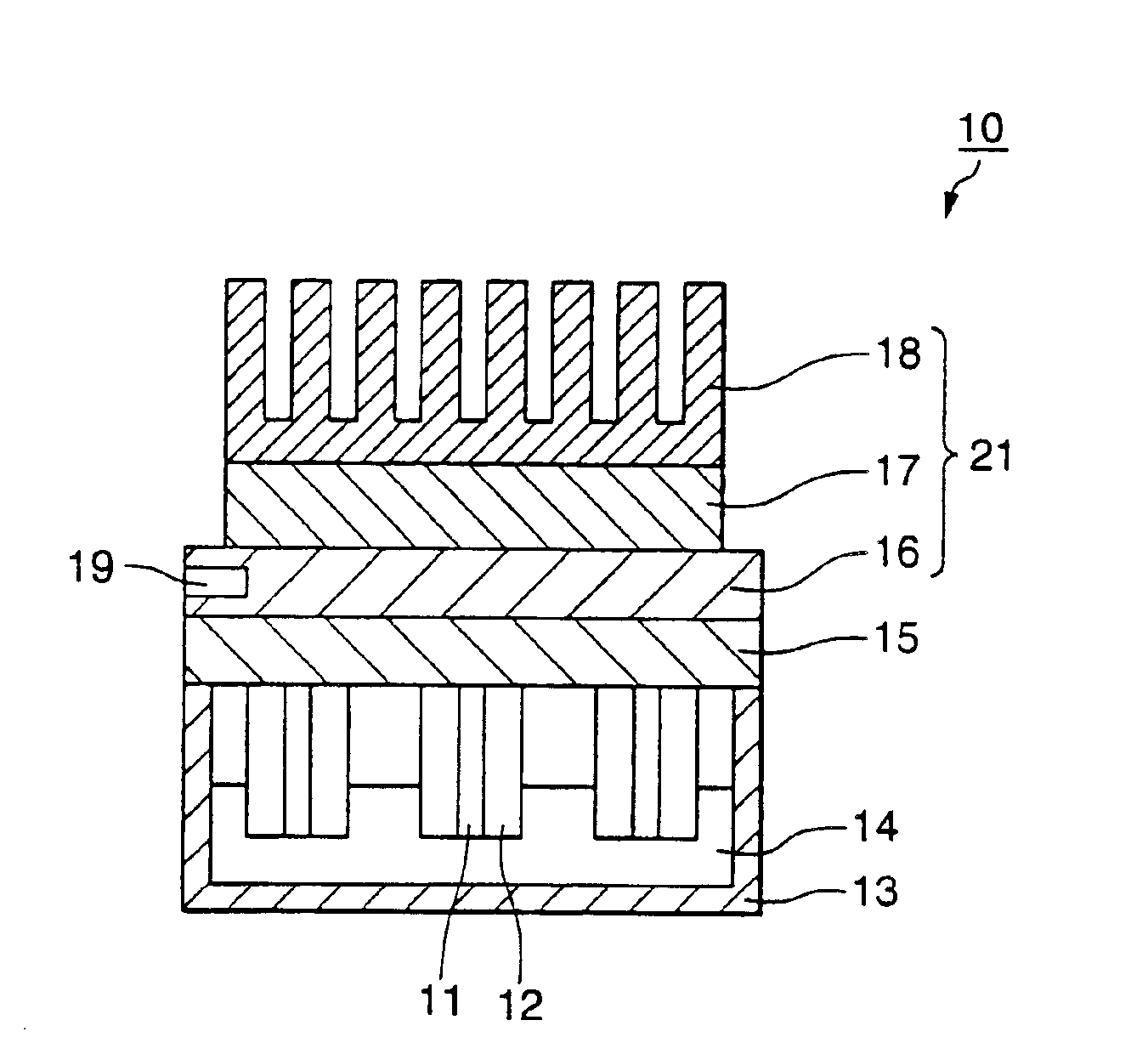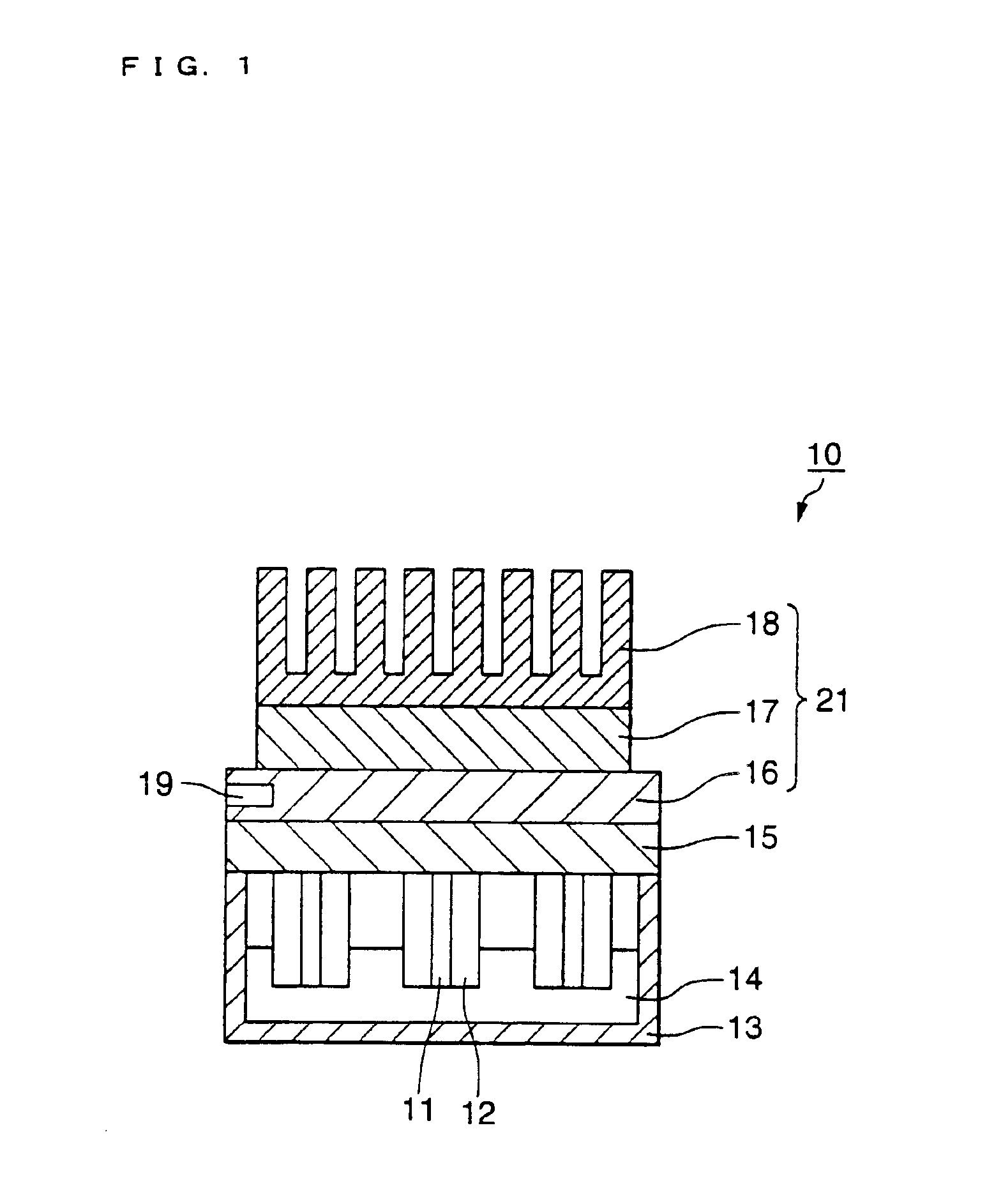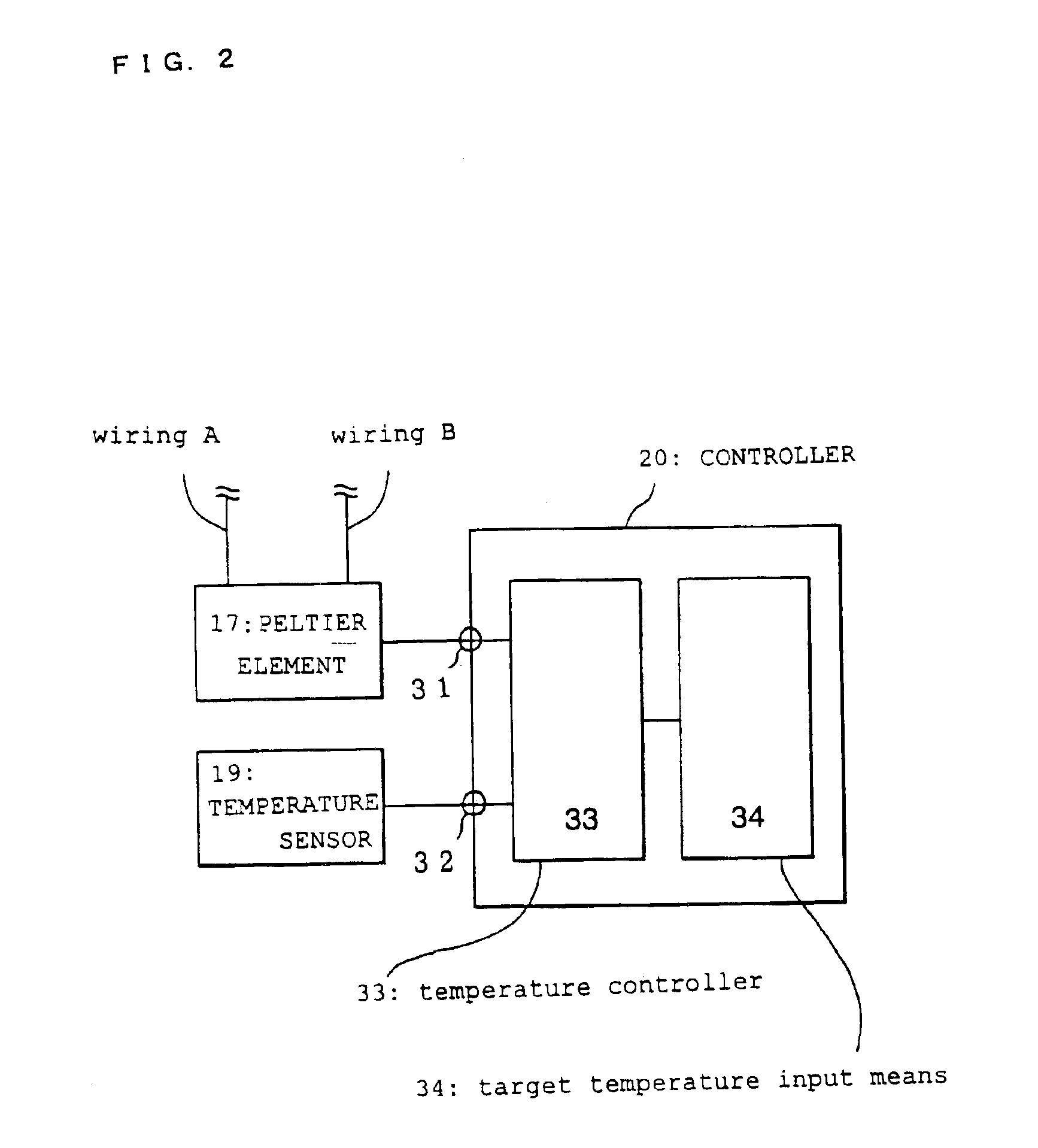Gene detection system, gene detection device comprising same, detection method, and gene detecting chip
- Summary
- Abstract
- Description
- Claims
- Application Information
AI Technical Summary
Benefits of technology
Problems solved by technology
Method used
Image
Examples
first embodiment
[0057]FIG. 1 is a partial cross section schematically illustrating a first embodiment of a gene detection system. In FIG. 1, the gene detection system 10 comprises an electrode substrate 15 for supporting an electrode, a plurality of pin-shaped electrodes 11 disposed on the electrode substrate 15, a heat insulating member 12 covering the peripheral surface of the electrodes, a rectangular container 13 open at the top, a solution 14 containing the target gene which is injected into the container, and heating and cooling means 21. The container 13 consists of a heat insulating material.
[0058]The heating and cooling means 21 comprises a soaking component 16 disposed in contact with the surface opposite the surface of the electrode support on which the electrodes are supported, a Peltier element 17 disposed in contact with the soaking component, and a heat sink 18 disposed in contact with the Peltier element to release the heat of the Peltier element. The soaking...
second embodiment
of the Gene Detection System, and Detection Using Such System
[0078]This embodiment differs from the gene detection system in the first embodiment in that probes with differing gene sequences are immobilized on respective electrodes. The layout of the Peltier element, temperature sensor, and controller in this embodiment is the same as in FIG. 2.
[0079]The detection process using the gene detection system in this embodiment is illustrated below with reference to FIGS. 5 and 6. FIG. 5 is a flow chart of the controller operation. FIG. 6 illustrates the relationship between temperature and time in the detection in this embodiment.
[0080]The target gene is first hybridized to the probe at a temperature lower than the target temperatures (Ti) to form double strands. The solution containing the double strands is injected into the container 13.
[0081]Next, as illustrated in FIG. 5, the target temperature Ti is input by the target temperature input means 34 to set the target temperature Ti in m...
third embodiment
of the Gene Detection System
[0088]In contrast to the gene detection system of the first embodiment, advantages of this embodiment are that the same number of electrode substrates, soaking components, temperature sensors, heat sinks, and Peltier elements are provided for each electrode, where the respective Peltier element is actuated as the temperature of each of the plurality of soaking components is measured, so as to independently control the temperature of each of the electrode substrates, and that probes with differing gene sequences are immobilized on the electrodes.
[0089]In this embodiment, the controller comprises a plurality of Peltier elements, and a plurality of output and input terminals connected to their respective temperature sensors. The unique Tx for each of the plurality of probes is set by the target temperature input means of the controller.
[0090]In this embodiment, the electrodes must be disposed far enough apart from each other to avoid overlapping thermal flux...
PUM
| Property | Measurement | Unit |
|---|---|---|
| Temperature | aaaaa | aaaaa |
| Sensitivity | aaaaa | aaaaa |
| Thermal properties | aaaaa | aaaaa |
Abstract
Description
Claims
Application Information
 Login to View More
Login to View More - R&D
- Intellectual Property
- Life Sciences
- Materials
- Tech Scout
- Unparalleled Data Quality
- Higher Quality Content
- 60% Fewer Hallucinations
Browse by: Latest US Patents, China's latest patents, Technical Efficacy Thesaurus, Application Domain, Technology Topic, Popular Technical Reports.
© 2025 PatSnap. All rights reserved.Legal|Privacy policy|Modern Slavery Act Transparency Statement|Sitemap|About US| Contact US: help@patsnap.com



